Showing 51–60 of 1165 results
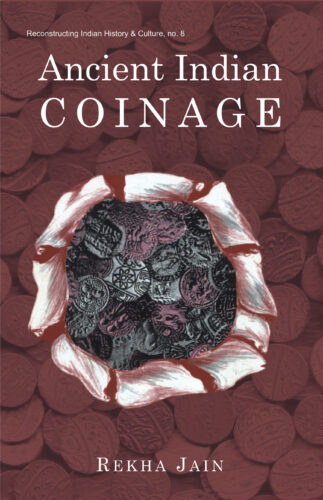
This book studies ancient Indias monetary economy in terms of its coinage through six successive periods from the janapadas to the pre-medieval. It establish linkages between the ancient coins and their references in ancient texts.
Money is unmistakably a landmark invention considering its indispensable role in economics and, more specially, in the commercial sphere of mans existence anywhere in the world. However, we have yet to have final answers to some of the fundamental questions: When, where, and how was money shaped as coins or as pieces of stamped metal first introduced to human civilization? Its genesis in India is traced back to the sixth century bc: during the second urban revolution, when coins came to be manufactured here independently, indigenously. Analysing in depth an astonishing mass of numismatic and kindred data, published in different catalogues, archaeological reports, journals and elsewhere, this book investigates the evolution of ancient Indias money economy: in terms of its coinage, through six successive periods: janapada, Maurya, post-Maurya, Gupta, post-Gupta, and pre-medieval which, in their togetherness, span nearly two millennia. Covering the entire subcontinental sprawl, Dr. Jain considers the whole variety of coins: local, universal standard, and even foreign, with meticulous descriptions of coin types, symbols, legends, fabric and metrology. In her thematic effort to reconstruct the history of ancient Indian coinage (and, thus, money economy), from its first beginnings in high antiquity to about the twelth century ad, the author has drawn on wide-ranging primary and secondary sources. And has also tried to establish linkages between different ancient coins and their references/descriptions in Vedic/Buddhist/Jaina texts, Paninis Ashtadhyayi, Kautilyas Arthashastra, epical literature, Dharmashastras, foreigners travelogues, old-world mathematical treatises, and numerous contemporary inscriptions, among others writings.
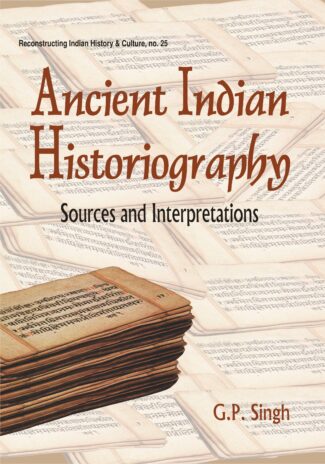
The book deals with the tradition of historiography from the Vedic times to the 12th century ad through a study of Vedic, Epic and Puranic traditions, Buddhist and Jain historiography, ancient dramas and writings of South India. Focusing on biographies, chronicles and vamsavalis, it discusses the social, political and economic conditions in different periods as highlighted by them.
In ancient India, learning and literature flourished at different levels and concerned almost all broad disciplines of knowledge. One such stream was historiography as we find a rich tradition of history-writing maintained over the centuries. This book examines the evolution of the tradition of historiography from the Vedic times to the 12th century ad, arguing against an oft-held belief that ancient Indians lacked a sense of chronology and history. Here, Dr. G.P. Singh highlights the contributions of ancient India to historiography through a critical study of literary works authored by eminent scholars and writers of the past that contain historical writing. Based on research for over two decades, the work elaborately studies Vedic, Epic and Puranic traditions, Buddhist and Jain historiography, historical references and details in the dramas of Kalidasa and Visakhadatta, and historical writing in South India. It pays special attention to writing of historical biographies, chronicles and vamsavalis. It discusses how various religious and other texts throw light on the political and social fabric of different periods and their economic condition and cultural milieu. It frequently refers to the views of modern scholars on various aspects of the historical writings. It looks into the value of the historical writings, the historical conditions under which they were written and the purpose for which written, their language and style, and their immediate impact and influence on writing in later times.The volume will offer fresh approaches to studying ancient Indian historiography and new bases of research on the subject for historians and scholars.

This volume bears testimony to the fact that Indian sages, philosophers and scholars had a grip on all the topics that the modern-day scientists deal with, including complicated surgery and quantum mechanics. Our Vedas, Upanisads and other literary works were the storehouse of scientific wisdom, though the prevailing socio-religious conditions impeded its widespread dissemination.
The experiences and knowledge from our past are recorded in manuscripts which have been handed down to us over several thousand years. The Government of India, through the Department of Culture, took note of the importance of this vast tangible heritage and, in order to preserve and conserve as well as to make access to this wealth easy, established the National Mission for Manuscripts (NMM). In order to disseminate the knowledge content of manuscripts, the Mission has taken up several programmes such as lectures, seminars and workshops. The Mission has published the proceedings of the above-said programmes under the following series: Samraksika (on conservation), Tattvabodha (comprising lectures based on manuscripts delivered by eminent scholars), Samiksika (research-oriented papers presented in the seminars), Krtibodha (transcribed and edited texts prepared at advanced level manuscriptology workshops conducted by NMM) and Prakasika (publication of rare, unpublished manuscripts).
Ancient Indian Scientific Thought and Modern Theories makes one revisit the development of Indian science and technology in varied fields since the Vedic period, and suggests that we have a living tradition which is vivid and dynamic, inheriting at the same time claiming freedom from the past. It is the proceedings of a three-day seminar held during 25-27 March 2017 in Kolkata, organized by the Sanskrit Sahitya Parishad, Kolkata, and sponsored by NMM. This volume bears testimony to the fact that Indian sages, philosophers and scholars had a grip on all the topics that the modern-day scientists deal with, including complicated surgery and quantum mechanics. Our Vedas, Upanisads and other literary works were the storehouse of scientific wisdom, though the prevailing socio-religious conditions impeded its widespread dissemination.
This volume is expected to invoke keen interest among all who wants to know about a scientific past that Indians inherit, be a scientist or a layman.

The book examines the affinities and interactions of the peoples who called themselves Arya, that is, the Indo-Aryans and the Indo-Iranians with other peoples and nations of the ancient world. Well-researched and with accurate references to time periods this scholarly work should deeply interest scholars and students of history and anthropology.
In an attempt to explore the ancient history of Central Asia and of the movement of ancient peoples, the work examines the affinities and interactions of the people who called themselves Arya, that is, the Indo-Aryans and the Indo-Iranians, with other peoples and nations of the ancient world, like the Semites, the Hurrians and the Medes. It delves into the processes of acculturation when people of different cultures came in contact with each other at a time that goes back to the very earliest of times (ninth or tenth millennium bce). It examines the movements of the Indo-Aryans and the Indo-Iranians across Asia and their neighbours and active trade partners like the Sumerians, the people of Mesopotamia and the Harappans. It thus throws light on the interactions of the early Indo-Aryans and Indo-Iranians with other flourishing central Asian civilisations of the time. It cites references to ancient traditions that still prevail among peoples in different cultures from different parts of the world, pointing out how these testify to the continuity of ancient traditions and, importantly, the ancient interaction between cultures.
Well-researched and with accurate references to time periods, this scholarly work will deeply interest scholars and students of history and anthropology concerned with the earliest origin of cultures and cultural interactions.
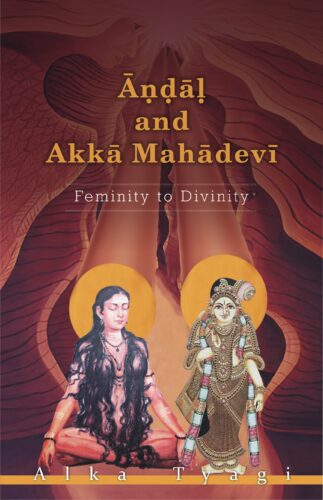
This book helps one understand bhakti in its historical, philosophical and social persepectives.Two medieval women, Andal, from Tamil Srivaisnavite tradition, and Akka Mahadevi, from Virasaivite tradition, with their poetic renderings and life, are in focus. It also helps to extricate bhakti experience from its mystical aura and make it more accessible to our perceptive faculties.
Bhakti poetry is an amazing amalgamation of art, music, literature, philosophy, politics, soteriology and mysticism. Andal and Akka Mahadevi: Feminity to Divinity reflects this amalgamation in letter and spirit. Two medieval women, Andal, a ninth-century Alvar saint-poetess from Tamil Srivaisnavite tradition, and Akka Mahadevi, a twelfth-century Kannada saint-poetess from Virasaivite tradition, with their poetic renderings and life, got elevated to a stature beyond that of saints.
This book deals with three major aspects. One, understanding of bhakti in its historical, philosophical and social perspectives. It thus delves on the idea and phenomenon of bhakti, the ancient religions and the evolution of bhakti tradition in south India. Two, it portrays the life of poet-saints Andal and Akka Mahadevi and their chosen path of bhakti. Their poetic renderings Tiruppavai and Nachiar Tirumoli of Andal, and vacanas of Akka Mahadevi
have found merit in rituals, theatre, cinema, dance, painting and other arts. The textual analysis of their poetry is done from religious, literary and socio-political angles. Three, it reflects on how the works of these saints have percolated down to the living patterns in modern India; rather it is a dedication to the living traditions in bhakti.
This volume also helps to extricate bhakti experience from its mystical aura and make it more accessible to our perceptive faculties. Thus it enthuses the spirit of anyone, be an artist, a poet, a philosopher, or a scholar.
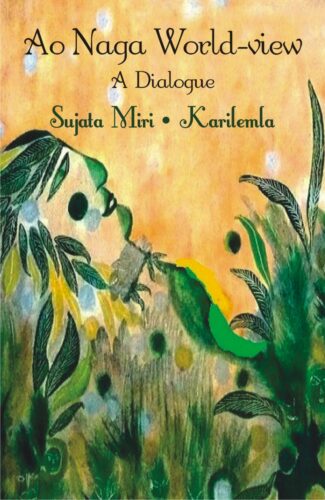
The book consists of a series of dialogues about the Ao Naga world-view, their traditions, rituals and ethical norms, and their ideas of history and objects of veneration among elders of the Ao Naga tribe, Ao Naga intellectuals and scholars.
The book, as the title says, consists of a series of dialogues about the Ao Naga world-view, their traditions, rituals and ethical norms, and their ideas of history and objects of veneration. The dialogue took place in specially organized meetings and participants were drawn from elders of the Ao Naga tribe, Ao Naga intellectuals and scholars, a student and a visitor from outside.
The conversations that took place in these meetings were recorded and what appears in the book is a very lightly edited version of the recorded conversations. The philosophically interesting aspects of these conversations are the views expressed by various participants on the human condition, the ethical grounding of human life, the dividing line between life and death, and about their institutions for educating the young and dispensing justice.
The book aims to achieve a twofold objective: (1) to secure an authentic articulation of the traditional Ao world through a dialogue between different Ao voices (an aim pursued very differently from the anthropologists participant observation), and (2) clearing the ground for the reflection of philosophical insights thrown up in the process of this articulation. The insights will be obvious to the sympathetic and discerning reader; the reflection is left to those who will read the book with serious philosophical interest.
Sujata Miris paintings are an insightful addition to the dialogic explorations of the book.
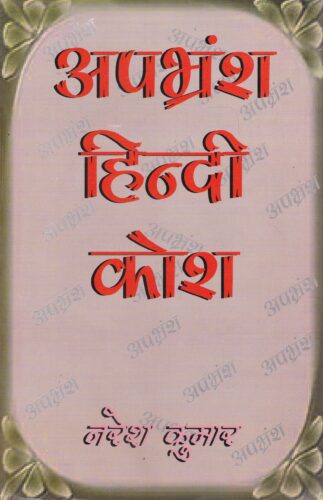
This Dictionary of Hindi Apabhramsa gives in detail the grammatical importance of words, their meanings, correct spellings, the alternate words and their various usages as mentioned by lexicographer Naresh Kumar.
This Dictionary of Hindi Apabhramsa gives in detail the grammatical importance of words, their meanings, correct spellings, the alternate words and their various usages as mentioned by lexicographer Naresh Kumar.
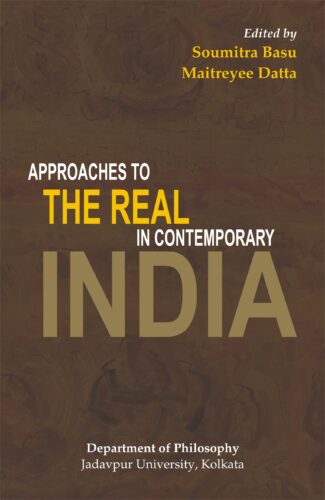
This volume focuses on those issues of the “Real” which have been treated and discussed by the philosophers of contemporary India such as K.C. Bhattacharyya, Surendranath Dasgupta, S. Radhakrishnan, Ras-Vihari Das, P.T. Raju, Satchidananda Murty and J.N. Mohanty.
“Man’s inquisitiveness to know about the “Real” has its origin in the philosophical traditions of the West and the East alike. For the ancient Greeks, the Real was metaphysical in nature and they sought to determine the nature of the real through the teachings of philosophers like Aristotle. These views later found place in the philosophy of many Christian fathers of the medieval period. With the Renaissance, the Western philosophy underwent an epistemic turn, so also discussions on the Real. In Indian philosophical heritage, the classical Indian philosophers of different philosophical systems too tried to grasp the concept of the Real from different theoretical frameworks and envisaged certain conclusions. The articles presented in this volume focus on those issues of the Real which have been treated and discussed by the philosophers of contemporary India such as K.C. Bhattacharyya, Surendranath Dasgupta, S. Radhakrishnan, Ras-Vihari Das, P.T. Raju, Satchidananda Murty and J.N. Mohanty. It also gives a glimpse on Professor Mohanty’s view on the Einstein–Tagore controversy.”
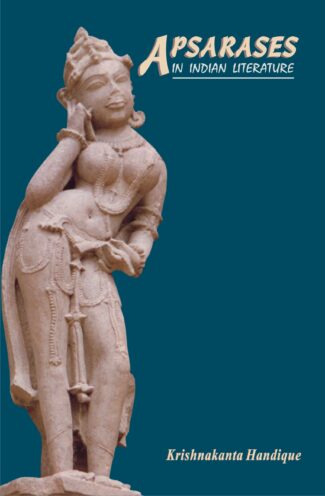
Indian literature abounds in a variety of myths and legends narrating allegorical/historical stories with moral teachings where celestial or semi-celestial beings, in particular the apsarases, occupy an important place. The work examines the origin and development of the institution of apsarases and their characteristics as described in the vast corpus of Vedic, Epic-Puranic and classical works, with a thorough study of the depiction of the legend of the Urvasi and Pururavas.
Indian literature abounds in a variety of myths and legends narrating allegorical/historical stories with moral teachings where celestial or semi-celestial beings, in particular the apsarases, occupy an important place. Of such legends, a few have become much popular and they reappear in the course of the history of literature at various stages. One such legend is that of Urvashi and Pururavas which is one of the most ancient legends of India, owing its origin to the Rigveda. This scholarly work, based on extensive original sources primary, comprising ancient Sanskrit texts, commentaries and glosses and modern literary pieces, kavyas and plays, as well as critical writings on these original works, studies the origin and development of the institution of apsarases and their characteristics as described in the vast corpus of Vedic, Epic-Puranic and classical works. In this context, it undertakes an interesting survey of the concept of nymphs (apsarases) in Indo-European, especially Greek mythology. Dr. Handique then thoroughly examines the depiction of the legend of Urvashi and Pururavas a favourite theme that has been immortalised in literary masterpieces in Indian literature as a whole: from the ancient Vedas and Puranas, the Harivamsha and Vikramorvashiyam to modern works like Urvashi Janani and Abhishapta Urvashi and stray poetic pieces. Presenting a new angle to the study, the book attempts to explore aspects of an age old tradition that bears close affinity with the institution of the apsarases in terms of mode of living worship and ideals like system of the devadasis. The book will prove invaluable to scholars of Indian mythology, culture and literature as well as interest general readers of ancient India’s legends and tales.
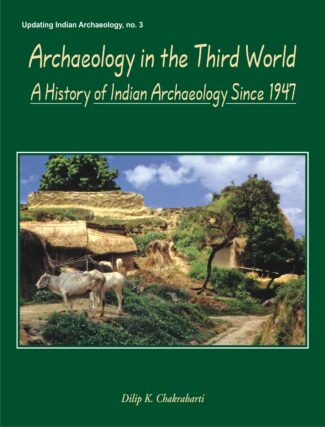
The work studies the evolution of archaeological research in post-independence India: from the new dimensions added to the ancient Indian past by archaeological research in the initial phase to the present era when the national archaeological policy seems to have lost its direction. It highlights the mileposts in its course of development and explores the traits of third world archaeology.
This book offers an authoritative historical frame of archaeological research in post-Independence India. It outlines the early evolution of the new Indias archaeological policy and the wide range of discoveries, which accompanied it. It shows how in the first flush of Independence archaeological research added new depths and dimensions to the ancient Indian past. It also looks closely at the tangled web of ideas behind this research, highlighting the major mile-posts in its story of development. At the same time it demonstrates with unerring clarity how the national archaeological policy of the 1950s and the 1960s has currently lost its direction. This is accompanied by an incisive analysis of different aspects of Indian heritage management, including the impact of religious fundamentalism, the looting of antiquities and the place of archaeology in Indian education. Finally, there is a detailed discussion on the scope of nationalist archaeology in India. One of the core arguments of the book is that the developments and features of post-Independence Indian archaeology may be representative of the archaeological scenario of the Third World as a whole. In fact, this is the first book to set down clearly the basic traits of Third World Archaeology and argue for its acceptance as a separate conceptual area in mainstream archaeology.
| There are no products |